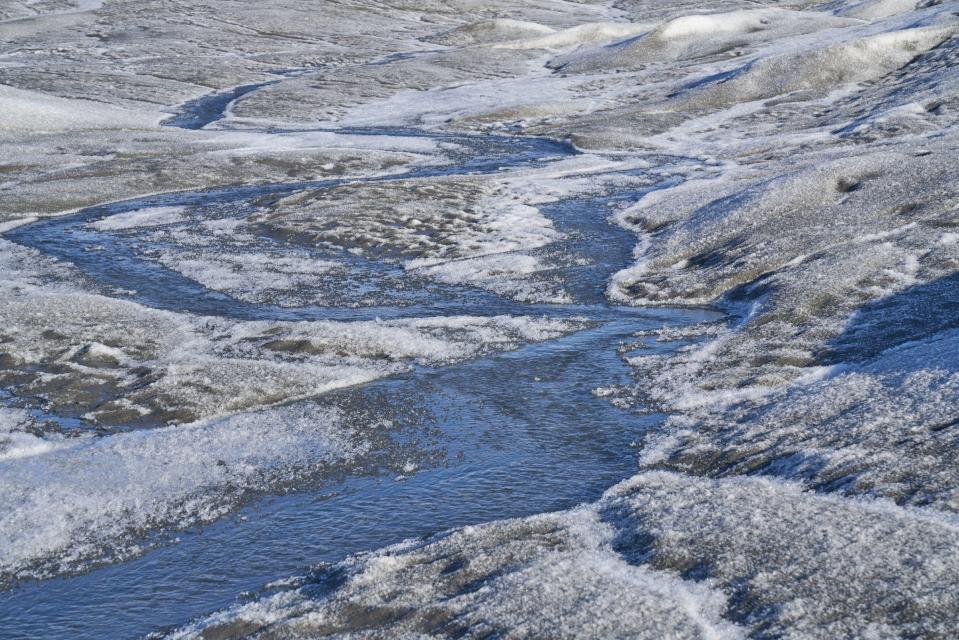Greenland's melting ice could ruin the Earth's coastal cities. A new study offers hope.
There may be hope for the Greenland ice sheet after all.
In fact, according to a new study published Wednesday, the massive ice sheet is likely to be more resistant to global warming than had been thought before.
"We found that the ice sheet reacts so slowly to human-made warming that reversing the current warming trend by cutting greenhouse gas emissions within centuries may prevent it from tipping," said study co-author Niklas Boers from the Potsdam Institute for Climate Impact Research in Germany.
Nils Bochow, a researcher at the Arctic University of Norway and the lead author of the study, told NPR that "the Greenland ice sheet is more resilient than we thought."
But this doesn't mean we should forget about global warming: The study authors clearly state that the ice sheet's slow reaction doesn't imply that humanity should slow down in its fight against climate change.
What is the Greenland ice sheet?
The Greenland ice sheet covers about 80% of the world's largest island, and is 656,000 square miles – an area about three times the size of Texas, according to the National Snow and Ice Data Center. At its thickest point, the ice sheet measures almost 2 miles thick and contains about 696,000 cubic miles of ice.
If the entire Greenland ice sheet melted, global sea level would rise about 24 feet, the Center said. Such an amount would inundate coastal cities worldwide.
The ice sheet is estimated to have contributed more than 20% to the observed sea-level rise since 2002, as a result of melting due to rising temperatures, according to the journal Nature.
More: Greenland sees hottest temps in 1,000 years. How its melting ice sheet has major impact on sea level

What did the researchers discover?
Basically, "their work shows the worst-case scenario of ice sheet collapse and consequent sea-level rise can be avoided – and even partly reversed – if we manage to reduce the global temperatures projected for after 2100," said Bryn Hubbard, a professor of glaciology at Aberystwyth University in Wales.
"Moreover, the lower and sooner those temperatures fall, the more chance there is of minimizing that ice melt and sea-level rise," said Hubbard, writing in the Conversation.
Researchers used computer models to simulate what might happen to the ice sheet under various temperature scenarios in the decades and centuries to come. They found that that even if critical temperature thresholds are temporarily crossed, a possible tipping of the ice sheet and therefore drastic sea level rise over hundreds of thousands of years could still be prevented, the Potsdam institute said in a statement.
To make this happen, greenhouse gas emission reductions would have to occur as soon as possible following the future spike in temperature, so that the temperature can be stabilized at no more than 1.5 degrees Celsius above pre-industrial levels, in the long term.
”Our results underline that even if we do not manage to stay below 1.5 or 2 degrees (Celsius) of global warming within the coming decades, and temporarily cross the critical temperature threshold of the Greenland ice sheet, we still have a chance to act," said Bochow.
Timing, though, is critical, according to the study. If the return to cooler temperatures after an ‘overshoot’ of the threshold takes more than a few centuries, then the ice sheet will still likely contribute several meters to global sea-level rise.
More: Greenland was once actually green, study says. That's an ominous climate change scenario.
This article originally appeared on USA TODAY: Study on Greenland's ice sheet offers hope on global sea-level rise

